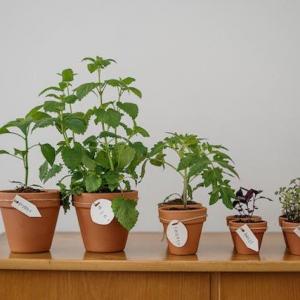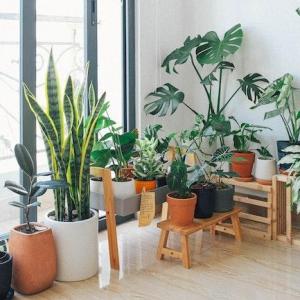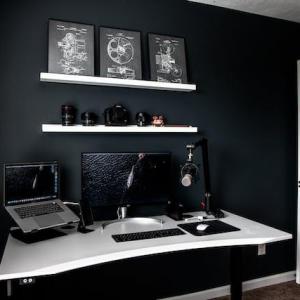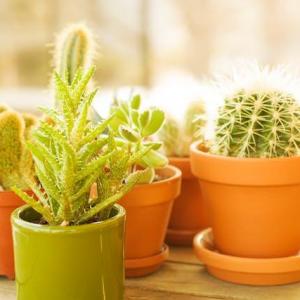
Define Your Garden's Purpose:
Before you start designing your garden, it is essential to define its purpose. Consider how you want to use the space. Do you want a peaceful retreat, a space for entertaining guests, or a colorful flower garden? Understanding the purpose of your garden will help guide your design decisions and ensure that the layout and features align with your vision.Plan Your Layout:
Once you have defined the purpose of your garden, it's time to plan the layout. Consider the size and shape of your outdoor space and how it can accommodate different elements such as flower beds, pathways, seating areas, and water features. Create a rough sketch or use a garden planning tool to visualize the layout before implementing it. Ensure that the pathways flow naturally and connect different areas of the garden. Consider adding curves and winding paths to create a sense of intrigue and discovery. Plan for different levels and dimensions by incorporating raised beds, terraces, or retaining walls. This adds visual interest and allows you to maximize the use of space.Choose the Right Plants:
Selecting the right plants is crucial for creating a beautiful and functional garden. Consider the climate, soil conditions, and amount of sunlight your garden receives. Choose plants that are well-suited to these conditions to ensure their health and longevity. Incorporate a mix of perennials and annuals to provide year-round interest. Perennials come back year after year and provide a stable foundation for your garden. Annuals, on the other hand, offer vibrant colors and can be changed seasonally to keep your garden looking fresh and exciting.Consider planting a variety of flowering plants to attract pollinators and create a visually appealing display. Include different heights and textures to add depth and dimension to your garden. Additionally, think about incorporating plants with different blooming times to ensure that there is always something in bloom throughout the seasons.
Create Outdoor Living Spaces:
A functional garden should include outdoor living spaces where you can relax, entertain, and enjoy your surroundings. Incorporate seating areas, such as a patio, deck, or a cozy corner with comfortable chairs and a table. These areas can be enhanced with accessories like outdoor rugs, cushions, and lighting to create a cozy and inviting atmosphere.Consider adding shade structures, such as pergolas or umbrellas, to provide relief from the sun during hot summer days. This allows you to spend more time outdoors comfortably. If space permits, create separate zones for dining, lounging, and cooking to maximize the functionality and usability of your garden.
Incorporate Water Features:
Water features can add a sense of tranquility and serenity to your garden. Consider incorporating a fountain, pond, or a small waterfall to create a soothing atmosphere. The sound of running water can help mask noise and create a peaceful environment.Water features also attract wildlife, such as birds and butterflies, adding another layer of beauty to your garden. If space is limited, consider a smaller water feature like a self-contained pond or a wall-mounted fountain. These can still have a significant impact on the overall ambiance of your garden.
Add Lighting:
Outdoor lighting not only extends the usability of your garden into the evening but also adds a magical touch. Use a combination of functional and decorative lighting to create different moods and highlight specific features.Install path lights along walkways and stairs to ensure safe navigation at night. Use up lights to illuminate trees or architectural elements, creating a dramatic effect. String lights or lanterns can add a whimsical and romantic ambiance to your outdoor space.
Consider using energy-efficient LED lights to minimize energy consumption and reduce maintenance. Install a timer or use solar-powered lights to automate the lighting system, saving you time and effort.
Incorporate Functional Elements:
To make your garden truly functional, consider incorporating elements that serve a purpose beyond aesthetics. For example, include storage solutions for garden tools, pots, and other essentials. This ensures that your garden remains tidy and organized.If you enjoy gardening, consider adding a greenhouse or a raised bed for growing vegetables and herbs. This allows you to indulge in your passion while also providing fresh produce for your kitchen.
Add a composting area to recycle organic waste and create nutrient-rich soil for your plants. This not only reduces waste but also promotes sustainability in your garden.
Consider Maintenance:
While designing your garden, it's important to consider the level of maintenance you are willing to undertake. Choose plants that are suitable for your gardening skills and the amount of time you can dedicate to upkeep.Consider using low-maintenance plants that require minimal watering, pruning, and fertilizing. Incorporate mulch to suppress weeds and retain moisture in the soil. Install an automated irrigation system to ensure that plants receive adequate water without the need for manual watering.
Choose durable and weather-resistant materials for hardscaping elements like pathways, decks, and furniture. This reduces the need for frequent repairs or replacements.
Create a maintenance schedule to stay on top of tasks such as pruning, weeding, and fertilizing. Regularly assess the health of your plants and address any issues promptly to prevent further damage.
Designing and landscaping a beautiful and functional garden requires careful planning and consideration. By defining the purpose of your garden, planning the layout, choosing the right plants, creating outdoor living spaces, incorporating water features and lighting, adding functional elements, and considering maintenance, you can create a garden that is not only visually appealing but also practical and enjoyable.
Remember to select plants that are well-suited to your climate and soil conditions to ensure their health and longevity. Create outdoor living spaces that provide comfort and invite relaxation and entertainment. Incorporate water features and lighting to add a sense of tranquility and extend the usability of your garden into the evening. Consider adding functional elements such as storage solutions, a greenhouse, or a composting area to enhance the practicality of your garden.
Lastly, be mindful of maintenance requirements and choose low-maintenance plants and materials to reduce the amount of time and effort needed to keep your garden looking its best. By following these tips, you can design and landscape a beautiful and functional garden that brings joy and tranquility to your outdoor space throughout the year.
Article
Be the first comment
Elite Article














